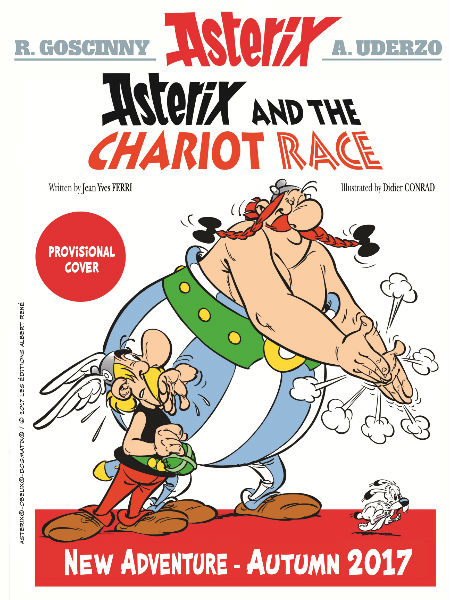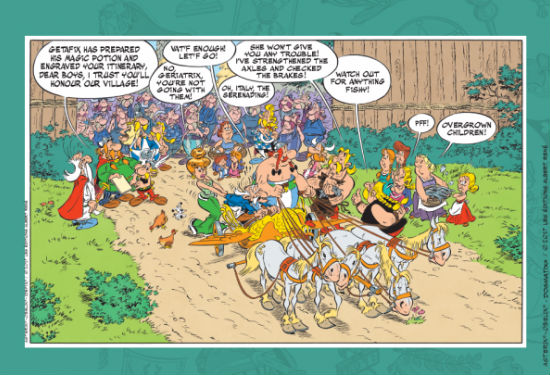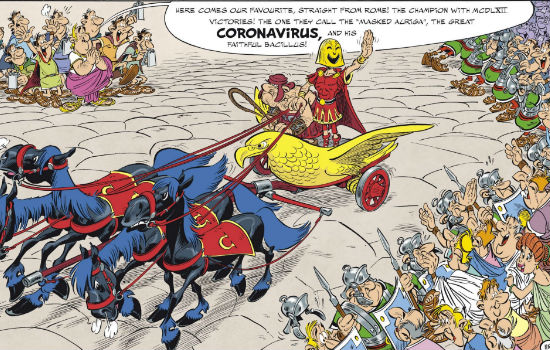
There is something about the Roman Empire that has always cried out for satire.
Perhaps it is that it was, and remains, the greatest empire in the history of humanity. Or perhaps that it was so domineering, so efficient, so all-encompassing and damn near omniscient and omnipresent, that besting it was well nigh impossible.
Whatever the appeal, Frenchmen René Goscinny and Albert Uderzo saw great potential in the Roman Empire under its emperor Caesar and mercilessly lampooned it with written and visual flair in the Asterix series, which kicked off in the Franco-Belgian comics magazine Pilote on 29 October 1959.
Their parodying brilliance, which came complete with very amusing word plays on names, visual gags, and most importantly, that one small isolated village in Gaul (France) that could, by virtue of a magic potion and the defiant tenacity of its people, stare down the might of the legions in comprehensively successful fashion.
Asterix, and his best friend/menhir-maker/roast boar addict Obelix, who fell in a vat of the potion as a baby and is forever invincible, have gone on to have 37 adventures including the most recent one, Asterix and the Chariot Race, written and illustrated by the new team of Jean-Yves Ferri and Didier Conrad (this is their third Asterix title).
The new instalment, which see Asterix and Obeklix take on the best charioteers or Auriga that the Empire has to offer, in a race that gallops its way down Italy from Modica (Monza) through Parma to Sena Jvlia (Sienna) to Tibvr (Tivoli), finishing in Neapolis (Naples) in a galant celebration of the high quality of Roman roads (it could be, and in fact is, that the Senator in charge of these arteries of the Empire, one Lactus Bifidus, has diverted the funds for the roads to his own personal orgiastic pleasure and needs a diversion from Senatorial scrutiny).
Whatever the motivation for the race, which Caesar is determined shall be won by a Roman citizen by fair means or foul – no prizes for guessing which option is employed – in this case the celebrated Auriga Coronavirus (the playful names are a delight throughout), Asterix and Obelix enter it with gusto and set in train the customary Roman legionnaire bashing, silly quips, wry observations and rampant silliness (with a very clever underpinning) and Empire humbling that has been the gleeful mainstay of the Asterix books since the start.

With the English translation baton, for the Commonwealth market at least, moving on from the legendary Anthea Bell to Adriana Hunter, you could be forgiven for wondering if the sustained wit and intelligent whimsy of the previous titles has been sustained.
The good news is that it most certainly is, and in common with all 36 previous titles, we’re treated to a gleefully madcap romp through the very heart of the Roman Empire where it turns out that things are not quite as united as our favourite Gauls had been led to believe.
In fact, Coronavirus aside, whose identity turns out to be very surprising indeed once his eternally-smiling gold helmet is removed, the race turns out to be a spirited, if often sabotaged, contest between the various rebellious scions of the Empire’s multiplicity of races, with the Etruscans, inhabitants of the Kingdom of Kush (southern Egypt), the Lusitanians, the Bretons (Madmax and Ecotax – how I love those names – who are rather British it must be said) and many, many others.
Good old Asterix tries to unite them all, in a rousing speech at an inn one night reminding that “We all have the same goal! Proving to Caesar that we can beat his champion!”
Weirdly it works and the end of the race is an absolute treat as a result, with the Romans once again not winning a damn thing (hardly a spoiler – Asterix books tend to always end with the Romans chastened and the Barbarians NOT.)
Inbetween, we have all kinds of Roman skullduggery, brilliantly-inspired references to everything from the building of Venice to the Leaning Tower of Pisa, from possible toppings for flat bread (hello pizza) to a peasant woman who looks like the Mona Lisa and a barkeeper like Pavarotti.
They are but a small selection of the myriad treats that await in this engaging and very funny addition to Asterix’s catalogue of adventures which lives up to the stellar standards of its predecessors.
The true joy, all silly cultural references and riotously humourous quips aside, and they are many and often, is the camaraderie between Asterix and Obelix, as always one against the might of the Roamn empire.
Sure they bicker like the two old friends they are, but it’s good-natured, affectionate and the source of much of the heartwarming characterisation that grants the Asterix series so much of its emotionally-resonant narrative richness.
They’re in fine form in Asterix and the Chariot Race and as they race along the length of Italy in The Great Transitalic Race in a chariot obtained from Turbocatalitix, you feel like you’re back spending time with two very good old friends, and a bunch of highly-entertaining one-off characters have long been the mainstay of these books.
The only downside? The wait to the next book but if Asterix and the Chariot Race is any indication, it will be very much worth the wait.
